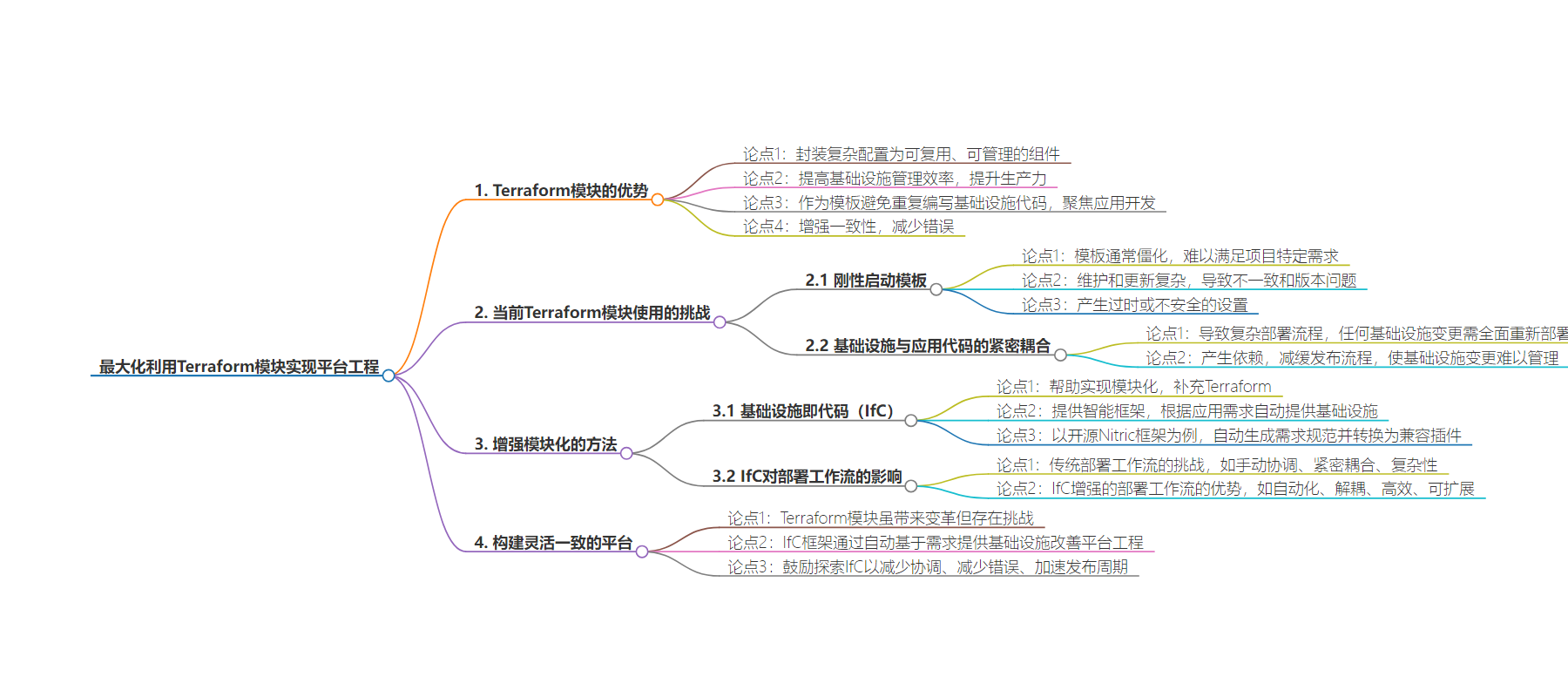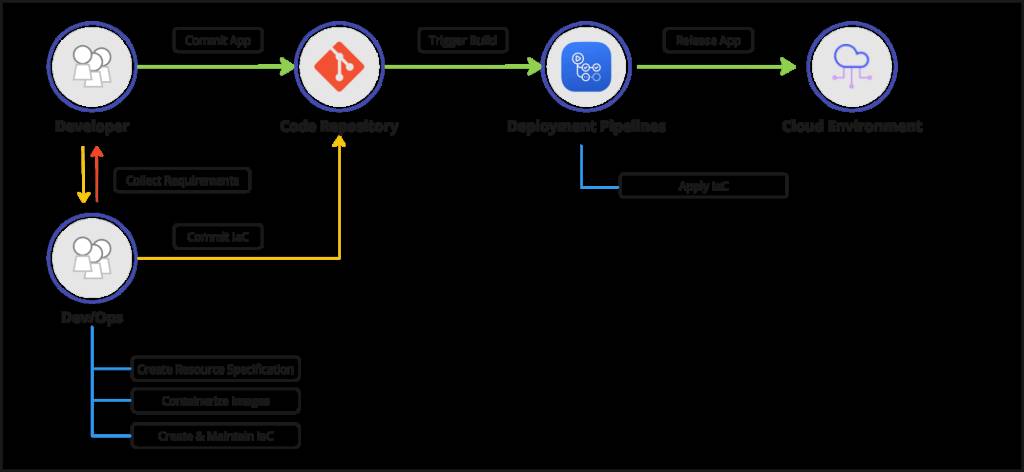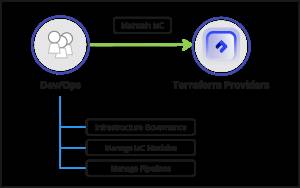包阅导读总结
1. 关键词:Terraform 模块、平台工程、基础设施管理、IfC 框架、部署工作流
2. 总结:本文探讨了 Terraform 模块在平台工程中的应用,指出当前使用存在的挑战,如模板僵化、代码耦合等,介绍了 Infrastructure from Code(IfC)框架对增强模块化和优化部署工作流的作用,鼓励采用新方法提升效率和潜力。
3. 主要内容:
– Terraform 模块在平台工程中的重要性
– 封装复杂配置,提高基础设施管理效率
– 避免重复编写基础设施代码,增强一致性
– 当前 Terraform 模块使用的挑战
– 刚性的起始模板,难以适应项目变化
– 基础设施和应用代码紧密耦合,影响部署和管理
– 利用 Infrastructure from Code(IfC)增强模块化
– 作为新范式,自动基于应用需求提供基础设施
– 以 Nitric 框架为例,展示其工作原理
– IfC 对部署工作流的影响
– 传统工作流的挑战
– IfC 增强工作流的优势
– 构建灵活一致的平台
– 克服现有挑战,发挥平台潜力,鼓励采用 IfC 框架
思维导图:
文章地址:https://thenewstack.io/maximizing-terraform-modules-for-platform-engineering/
文章来源:thenewstack.io
作者:Rak Siva
发布时间:2024/6/24 19:55
语言:英文
总字数:1023字
预计阅读时间:5分钟
评分:86分
标签:Terraform,模块,平台工程,Infrastrucutre as Code,Nitric
以下为原文内容
本内容来源于用户推荐转载,旨在分享知识与观点,如有侵权请联系删除 联系邮箱 media@ilingban.com
Terraform modules encapsulate complex configurations into reusable, manageable components. Many teams use these modules to streamline infrastructure management, significantly boosting productivity.
By using prebuilt modules as templates, teams avoid the repetitive task of writing infrastructure code from scratch for each new project, allowing them to focus more on developing the application itself. This practice enhances consistency and reduces the likelihood of errors by reusing proven configurations across different environments.
However, many teams use Terraform modules in a way that misses their full potential and leads to maintenance challenges and inconsistencies. Let’s look at two common practices, their challenges and the changes teams can make to harness the full power of Terraform modules.
Challenges With Current Terraform Module Usage
Common Practice 1: Rigid Starter Templates
Using prebuilt templates for new projects is appealing for quick setups. Tools like Backstage offer catalogs of starter projects, providing predefined configurations that are often composed of Terraform modules. However, these templates are usually rigid, covering general use cases rather than the specific needs of evolving projects. As project requirements change, maintaining and updating these modules becomes increasingly complex. Developers must manually modify configurations, which leads to inconsistencies and versioning issues, and results in outdated or insecure setups.
Common Practice 2: Tight Coupling of Infrastructure and Application Code
Many teams have a single comprehensive Terraform project that defines the entire infrastructure setup of their application. This creates a tight coupling that leads to a complex deployment pipeline, where any infrastructure change requires a full redeployment. Such tight coupling creates dependencies that can slow down the release pipeline and make infrastructure changes difficult to manage efficiently.
The reliance on rigid templates and the tight coupling between application code and infrastructure configurations keep teams from fully leveraging Terraform modules in modern infrastructure management.
To overcome these challenges, teams should shift their perspective to build a true platform. Instead of using static code snippets and comprehensive Infrastructure as Code to manage manually, teams should focus on dynamic, reusable components. This is made feasible by introducing a framework capable of orchestrating the linkage of Terraform modules to application requirements in an automated way.
Enhancing Modularization With Infrastructure from Code
Infrastructure from Code (IfC) is a new paradigm that helps teams achieve modularization; it complements Terraform by offering an intelligent framework that automates infrastructure provisioning based on application requirements. By dynamically identifying and applying modules as needed, IfC serves as the vital link between your decoupled IaC project and your application code.
Let’s take the open source Nitric framework as an example. Instead of manually updating infrastructure, Nitric’s IfC automatically generates a requirements specification. This specification details the resources used by the application, their hierarchy and their intended runtime usage. The framework then translates this specification into plug-ins that are compatible with IaC solutions like Terraform modules, which handle the provisioning of resources, roles and permissions.
With this method, applications stay synchronized with their infrastructure, ensuring only necessary resources and permissions are provisioned.
How IfC Affects Deployment Workflows
As described above, traditional deployment workflows often involve tightly coupled application code and Infrastructure as Code projects (e.g., Terraform). The diagrams below illustrate the transformation from a traditional workflow to an IfC-enhanced deployment workflow.
Traditional Deployment Workflow

Typical deployment workflow
- Developer: Commits application code to the code repository.
- DevOps: Gathers infrastructure requirements, communicates them and commits the necessary Terraform configurations to the same repository.
- Deployment pipelines: Triggered by the code commit, the pipeline includes actions such as application unit tests, static script analysis, security scans and finally provisioning with Terraform.
- Cloud environment: The application and its infrastructure are deployed to the cloud environment.
This approach has several challenges:
- Manual coordination: Developers and operations teams must manually coordinate infrastructure requirements and updates.
- Brittle, tight coupling: Changes in infrastructure needs necessitate manual updates to the Terraform project, slowing down the release pipeline.
- Complexity: The deployment process is more complex and prone to errors due to manual steps and dependencies.
By adding IfC to the deployment workflow, teams streamline and automate their process.
IfC-Enhanced Deployment Workflow

IfC-enhanced deployment workflow
- Nitric server: Automates the creation of resource specifications, containerizes images and generates deployment scripts using Terraform IaC modules to produce a Terraform project that is ready for deployment.
- Developer: Commits application code to the code repository, leveraging resources from the Nitric SDK. Each resource in the SDK has a corresponding IaC module maintained by the DevOps team.
- Cloud environment: The final deployment to the cloud environment is achieved with a streamlined pipeline.
DevOps can work in parallel rather than as a blocker to the above flow:

IfC-enhanced DevOps workflow
4. DevOps: These teams are freed from the workflow of a single application and are able to focus on platform specific activities such as building and maintaining IaC modules (Terraform, in most cases), which adhere to the governance standards of their organization.
This approach offers several benefits:
- Automation: IfC automates the process of gathering infrastructure requirements from application code and dynamically applies the necessary Terraform modules.
- Decoupling: The application code and infrastructure are decoupled, allowing for independent updates and faster releases.
- Efficiency: The deployment pipeline is simplified, reducing errors and enabling quicker, more reliable deployments.
- Scalability: Multiple projects can use the same set of prebuilt modules, promoting consistency and reducing duplication of effort.
Build a Flexible and Consistent Platform
Terraform modules have transformed infrastructure management by enabling reusability and consistency. However, the reliance on rigid templates and the tight coupling between application code and infrastructure configurations present significant challenges.
IfC frameworks transform platform engineering by automating infrastructure provisioning based on application requirements, fostering better resource management and improving the efficiency and scalability of deployment pipelines.
I encourage you to explore this approach to see how it can reduce manual coordination, minimize errors and accelerate release cycles — ultimately bridging the gap between development and operations, and empowering teams to focus more on innovation and application development. Embrace Infrastructure from Code (IfC) to transform your Terraform practices and unlock the full potential of your platform.
YOUTUBE.COM/THENEWSTACK
Tech moves fast, don’t miss an episode. Subscribe to our YouTubechannel to stream all our podcasts, interviews, demos, and more.
